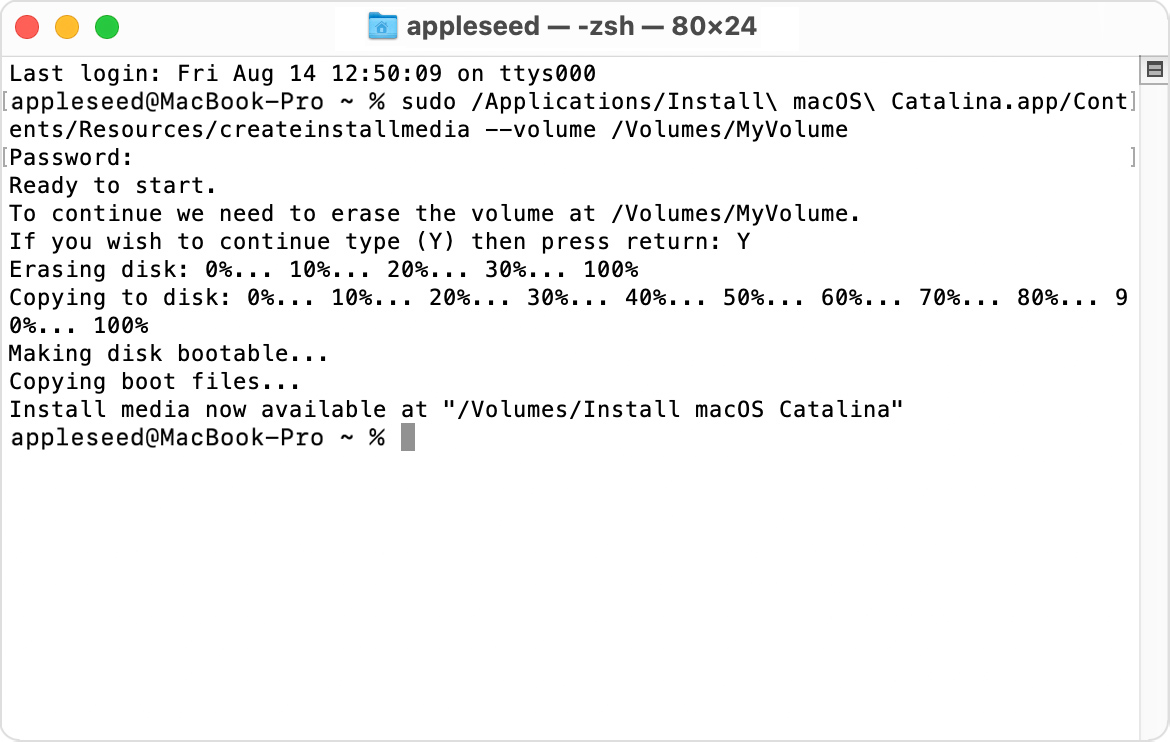

- Create file mac command line manual#
- Create file mac command line software#
- Create file mac command line code#
- Create file mac command line iso#
Git is the source code management system used for the Linux kernel and many other highly complex projects. Another reason to keep this on hold for now. I don't want to pay for a Chromebook just to run Chrome. ZD Net suggested that the running OS would be slow so I maybe I am not missing much at this stage of development. Also, the OS is based on Ubuntu, despite the build I got from Europe based on SUSE. Updated: Turns out Google doesn't provide an image or download of the OS itself, only the source code and compilation instructions. I am going to postpone further research until I am sure I have a good distribution. Maybe it was a pirated or tampered version. I could not find a download link at Google, but I found one at a. There was a local word processing application, but I didn't get far enough to test it out, it was just too slow. The desktop itself is clean and appears to be optimized to run the Chrome web browser. This could also explain the slow performance I experienced. I might have made a mistake when setting up the virtual machine because it complained of low memory right after booting. Very helpful for beginners and a good reference to their tools.
Create file mac command line manual#
I always appreciated the 9 pound manual of documentation that came with it. SUSE was one of the distributions I cut my teeth on in the Linux world. It appears to be based on OpenSUSE Linux 11.4. Then, fired it up in VMware Player and took a look around.
Create file mac command line iso#
I downloaded a bootable ISO of the Google Chromium OS release candidate. Sorting all fields ascending looks like = Otherwise, a simple concatenation would create undesired results. This only works because the first two fields, rank and shift, cannot be empty. I sorted them by concatenating the fields together and making the right comparisons. I needed to sort an array of these objects by rank ascending, shift ascending, then promoted_on (date) descending. Here was my object (not tied to a database, just created for convenience):

The main reason I even bothered to post this is to heap a little more praise on Ruby for working the way I expected it to work. I was working on a project today and needed to make some changes to the way an array on objects was sorted before being displayed on the screen.
Create file mac command line software#
Apple really has some very nicely thought out software in their hardware. The Airport Express actually detected the problem and made the suggestion when I connected to it with the Airport Utility. The only modification I had to make from a basic configuration was to turn off network address translation (NAT) on the Airport Express to avoid a double NAT situation since the 2WIRE also provided NAT. The Airport Express provided a stronger signal that the 2WIRE and allowed me to connect the DVR to the Internet. The next strategy was to set up a separate wireless network and plug the Airport Express into one of the wired ports on the router. Then, I finally did the research and found that the plain Express can't be used to extend a 2WIRE wireless router. I found a helpful article at Apple Support that let me reset it to factory settings. Before doing any research, I made manual changes to the Airport Express that rendered it a brick. I had a spare Airport Express and my first thought was to use it to extend the DSL router network. The DVR had a USB wireless adapter, but because of the location of router, the signal was not quite strong enough to make the connection work. When it was done, I needed to connect the satellite DVR to the wireless DSL router to enable additional features. It was an inconvenient process to say the least. After the failure of my cable TV/Internet service last month, and the slow response of the cable company, I dumped cable in favor of satellite+DSL.


 0 kommentar(er)
0 kommentar(er)
